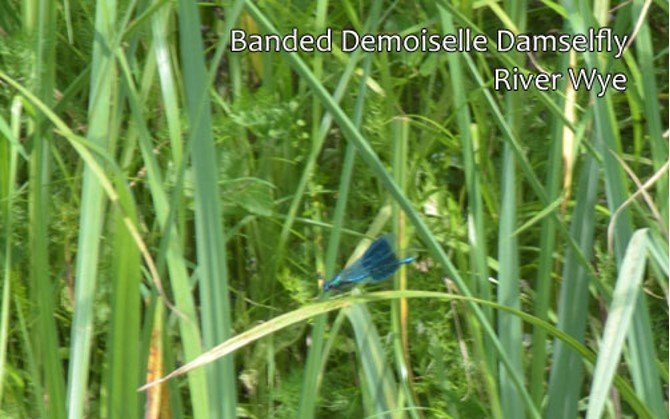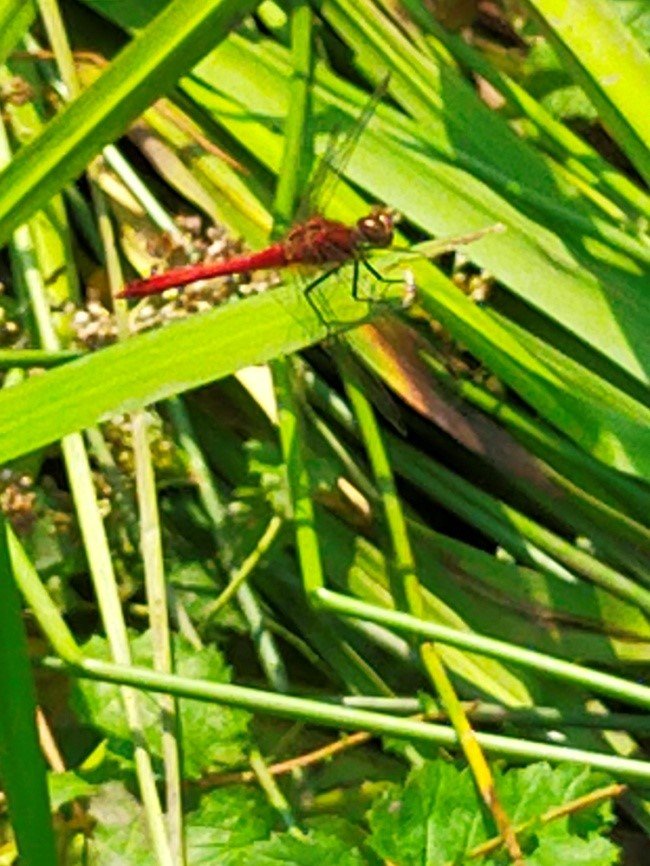Nature at Thornbridge
We have some wonderful volunteers here at Thornbridge keeping an eye on the wildlife.
August 2023 Dragonfly report - by Simon Unwin
Another disappointing dragonfly month with little to report. The continuing poor, unsettled weather with overcast, damp and breezy days have suppressed much of the activity that we expect at this time of the summer. Find out more
July 2023 Dragonfly report - by Simon Unwin
A largely disappointing month from a dragonfly perspective due to the seasonally cool, wet and cloudy weather. When the sun disappears, so do the dragonflies. With temperatures struggling to reach 20C and rain falling on most days my activities have been curtailed somewhat. Still, there has been some dragonfly activity and things to see in the brief warmer, brighter spells. Find out more
2022 Dragonfly report - By Simon Unwin
Here is the record of all the dragonflies spotted at Thornbridge in 2022, one of them has never been recorded in the Peak District…until now.
Emerald Damselfly - Lestes sponsa
Started to appear from July onwards and are quite numerous. On some days many individuals and mating pairs can be seen. Even on cool days they can be found among the lakeside vegetation.
Azure Damselfly - Coenagrion puella
One of the most numerous dragonflies on all lakes from June to August. Very difficult to distinguish this species in flight from the Common Blue Damselfly whose habitat it shares
Blue-tailed Damselfly -Ischnura elegans
Quite numerous and widespread but less so than the other blue damselflies. The males are easily identified by the blue-tipped black abdomen. Present June to September.
Migrant Hawker - Aeshna mixta
From a single sighting last year this species has become one of the most abundant and widespread of the late-summer hawker dragonflies. Seen on all the lakes in August and September.
Brown Hawker - Aeshna grandis
A common sight on all the lakes from June into early September. Quite distinctive with it’s brown coloration and the golden-suffused hue of it’s wings.
Four-spotted Chaser -Libellula quadrimaculata
Not recorded last year (although we have a single record of this species in the past) this is another dragonfly that has been present in numbers in June and July.
Black-tailed Skimmer -Orthetrum cancellatum
An uncommon sight in July and August. A few records of single individual males.
Ruddy Darter - Sympetrum sanguineum
Present in small numbers alongside the Common Darter, from which it is difficult to differentiate, especially in flight. Needs a close view to identify.
Large Red Damselfly - Pyrrhosoma nymphula
Normally the first species to be seen in spring, but they weren’t recorded until June this year. Also seemed to be less numerous than would normally be expected.
Common Blue Damselfly -Enallagma cyathigerum
The most widespread and numerous species. Can be seen pretty much everywhere on open water, bankside vegetation and among the grass in the pasture at some distance from the water. Needs close examination to identify positively, being very similar in appearance and habit to the Azure Damselfly. Present in thousands from May to August.
Small Red-eyed Damselfly Erythromma viridulum
Just a single record of this species, in early September, right at the end of their normal flight period. Not previously recorded in the Peak District. One to look out for next year.
Southern Hawker - Aeshna cyanea
Normally expected to be the most abundant and widespread of the hawkers, but it has been strangely a rarity in my records this year. Only 3 sightings including an immature female between July and September.
Emperor Dragonfly - Anax imperator
Particularly abundant this year. Probably the commonest sight among the hawker dragonflies between June and August.
Broad-bodied Chaser -Libellula depressa
The earliest of the true dragonflies to appear the Broad-bodied Chaser is a common sight on all lakes in June and July. The bright yellow females and powder blue males are present in considerable numbers and can be seen over the water and resting on vegetation.
Common Darter- Sympetrum striolatum
A common and widespread sight on all lakes from July into October. Present in large numbers with single adults and many mating pairs visible.






















